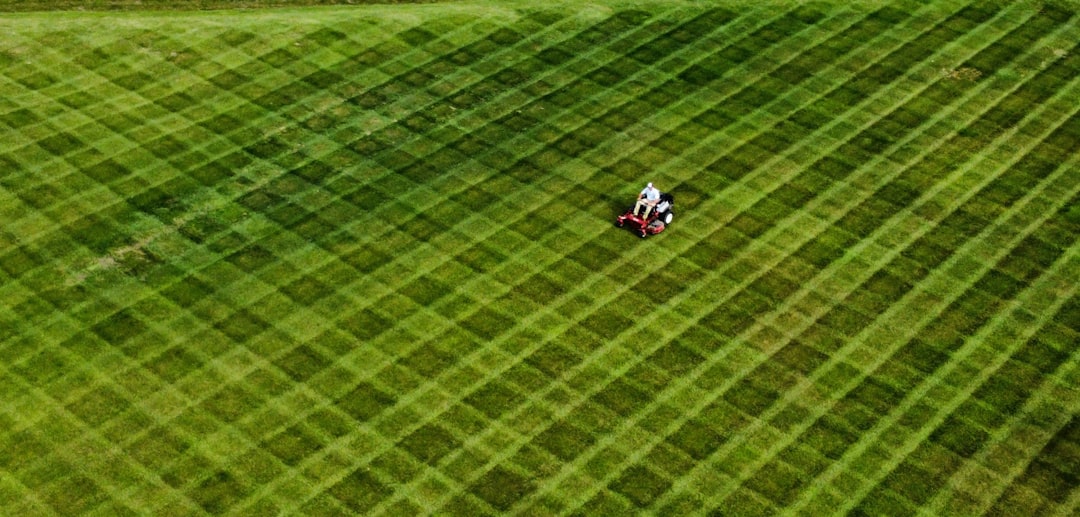Reviving Your Lawn: A Comprehensive Guide to Banishing Brown Spots

Maintaining a lush, green lawn is a dream for many homeowners. However, brown spots can often mar the beauty of your yard, leaving you wondering what went wrong. In this guide, we'll explore the common causes of brown spots on a lawn and provide effective solutions to help you restore its health and vibrancy.
One of the most common culprits behind brown spots is fertilizer burn. While fertilizers are essential for providing nutrients to your grass, over - application can lead to excessive salt buildup in the soil. This can cause the grass to dry out and turn brown. To prevent fertilizer burn, always follow the manufacturer's instructions carefully. Measure the correct amount of fertilizer for your lawn size and apply it evenly. If you suspect fertilizer burn, water the affected area thoroughly to flush out the excess salts. You may also need to reseed the severely damaged spots.
Diseases can also take a toll on your lawn, resulting in brown patches. Fungal diseases such as dollar spot, brown patch, and snow mold are particularly common. Dollar spot appears as small, circular brown spots, while brown patch forms larger, irregularly shaped areas of dead grass. Snow mold is prevalent in colder climates and looks like gray or pinkish patches on the lawn after the snow melts. To combat these diseases, proper lawn maintenance is key. Keep your grass at the recommended height for your grass type, as over - or under - mowing can stress the grass and make it more susceptible to diseases. Aerate your lawn regularly to improve air circulation and drainage. In severe cases, you may need to use fungicides, but it's important to choose the right one, depending on the specific disease affecting your lawn.
Dog spots are another frequent cause of brown spots on a lawn. When dogs urinate on the grass, the high nitrogen content in their urine can burn the grass. Female dogs tend to cause larger, more concentrated spots, while male dogs may create multiple smaller spots. To minimize dog spots, train your dog to urinate in a specific area of the yard, such as a gravel or mulch bed. You can also dilute the urine by watering the area immediately after your dog urinates. Another option is to use a lawn treatment product designed to neutralize the nitrogen in dog urine.
In addition to these causes, improper watering can also lead to brown spots. Over - watering can suffocate the grass roots by depriving them of oxygen, while under - watering can cause the grass to dry out. Water your lawn deeply but infrequently. Aim to provide about 1 - 1.5 inches of water per week, either through rainfall or irrigation. Water in the early morning to reduce evaporation and allow the grass to dry before nightfall, which helps prevent the growth of fungi.
Soil compaction is yet another factor that can contribute to brown spots. Heavy foot traffic, especially on clay - rich soils, can compress the soil particles, making it difficult for water, air, and nutrients to reach the grass roots. Aerating your lawn at least once a year can help alleviate soil compaction. You can use a manual or mechanical aerator to remove small plugs of soil from the lawn, allowing the roots to breathe and grow more freely.
Finally, pest infestations can also damage your lawn and cause brown spots. Insects such as grubs, chinch bugs, and armyworms can feed on the grass roots or blades, leading to thinning and browning of the lawn. Inspect your lawn regularly for signs of pests, such as small holes in the grass, wilting, or the presence of insects themselves. If you detect a pest problem, choose an appropriate insecticide or consider using natural pest control methods, such as introducing beneficial insects or using neem oil.
By identifying the root cause of the brown spots on your lawn and taking the appropriate steps to address them, you can transform your lackluster lawn into a beautiful, healthy oasis. Remember, consistent lawn care practices, including proper mowing, watering, fertilizing, and pest control, are essential for maintaining a vibrant and green lawn year - round.